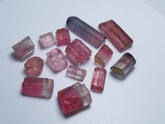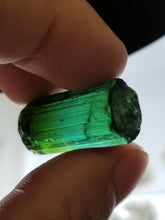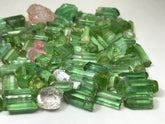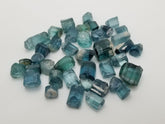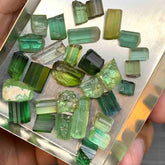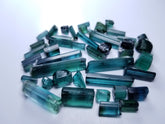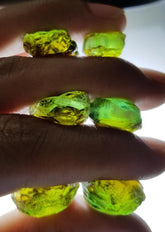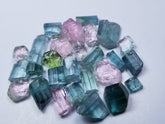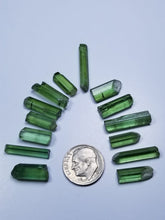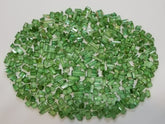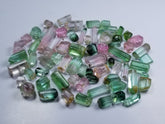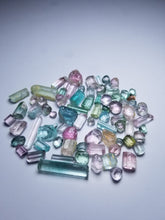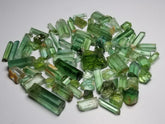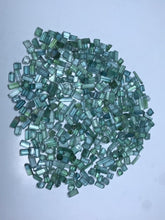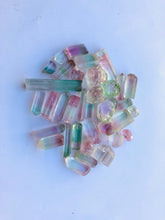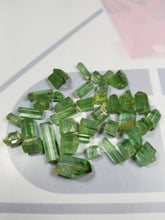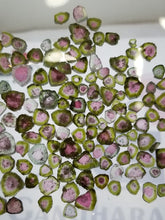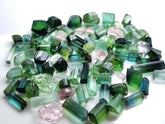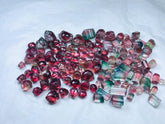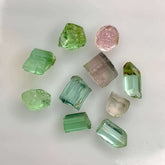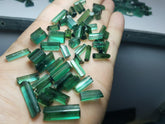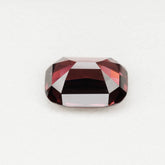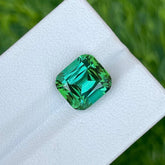Filter
58 results
30
- 10
- 15
- 20
- 25
- 30
- 50
Date, new to old
- Featured
- Best selling
- Alphabetically, A-Z
- Alphabetically, Z-A
- Price, low to high
- Price, high to low
- Date, old to new
- Date, new to old
Sort
Sort by:
- Featured
- Best selling
- Alphabetically, A-Z
- Alphabetically, Z-A
- Price, low to high
- Price, high to low
- Date, old to new
- Date, new to old
-
38.90 Grams Gemmy Lustrous Facet Grade Rough Bicolor & Rubellite
Buy 38.90 Grams Gemmy Lustrous Facet Grade Rough Bicolor & Rubellite from Africa with Slightly Included/Clean Clarity and Raw Shape which is available for sale at wholesale rate. Its price is starting from $570. Weight: 38.90 Grams Clarity : Slightly Included/ Clean Number of...- $570.00
- $570.00
- Unit price
- / per
-
Big Beautiful Green & Bicolor Tourmaline
Big Beautiful Green & Bicolor Tourmaline from Africa at Gandhara Gemstones. The lot contains some beautiful green pieces while some pieces have a little bluish color hue. The Pieces also have some inclusions which can be seen in the Video. Its Untreated and Natural....- $2,533.00
- $2,533.00
- Unit price
- / per
-
Facet Grade Rough Mint Green and Pink Tourmaline
101.90 Grams of Facet Grade Rough Mint Green and Pink Tourmaline from The mines of Jaba, Afghanistan available for sale at Gandhara Gemstones. It is Untreated and Natural. Weight: 101.90 Grams Number of Pieces : 101 Biggest Size: 06 Grams Average Size : 01...- $3,360.00
- $3,360.00
- Unit price
- / per
-
17.30 Grams Rough Indicolite Tourmaline for Faceting from the mines of Kunar, Afghanistan
17.30 Grams Rough Indicolite Tourmaline for Faceting from the mines of Kunar, Afghanistan is available for sale at Gandhara Gemstones. It is Untreated and Natural. The price of this 17.30 Grams Rough Indicolite Tourmaline is $481 USD. Weight: 17.30 Grams Number of Pieces: 40...- $481.00
- $481.00
- Unit price
- / per
-
8.58 Grams of Facet Rough Paraiba Tourmaline
8.58 Grams of Facet Rough Paraiba Tourmaline available for sale at Gandhara Gemstones. It is Untreated and Natural. The price of this 8.58 Grams of Facet Rough Paraiba Tourmaline is $475 USD. Weight: 8.58 Grams Number of Pieces: 03 Biggest Size: 3.61 Grams Average...- $475.00
- $475.00
- Unit price
- / per
-
Tourmaline Facet Rough Lot
Tourmaline is an extremely popular gemstone; the name Tourmaline is derived from Turamali, which is thought to mean "stone with mixed colors." Product Information: Gemstone Name Tourmaline Facet Rough Lot Weight (In Grams) 19 grams Weight (In Carats) 95 carats Number of Pieces 30...- $375.00
$400.00- $375.00
- Unit price
- / per
-
Facet Rough Lustrous Multi Color Tourmaline
Facet Rough Lustrous Multi Color Tourmaline from Afghanistan is available for sale at Gandhara Gemstones. The lot Contains different colors of beautiful pieces of Tourmaline which will produce some amazing pieces when Faceted. It is Untreated and Natural. Weight: 72 Grams Biggest Size: 3.96...- $2,016.00
- $2,016.00
- Unit price
- / per
-
Buy Blue Tourmaline Facet Rough lot
Blue Tourmaline Facet Rough lot from Afghanistan is available for sale at Gandhara Gemstones. The price of this Blue Tourmaline Facet Rough lot is $55 USD per gram. Weight: 42.36 grams Treatment: None Origin: Afghanistan Type: Facet Grade Rough Clarity: internally clean Average size...- $2,350.00
- $2,350.00
- Unit price
- / per
-
Facet grade Tourmaline big sizes and super flawless loupe clean
Facet grade Tourmaline big sizes and super flawless loupe clean from Afghanistan Available for sale at gandharagems. Weight: 120 carat No of pieces: 6 Max size: 31.40 ct Min size: 11 ct- $910.00
- $910.00
- Unit price
- / per
-
Beautiful Facet Rough Light blue & Pink Tourmaline
Beautiful Facet Rough Light blue & Pink Tourmaline from Afghanistan available for sale at Gandhara Gemstones The lot is small but will produce an amazing yield when Faceted. It is Untreated and Natural Weight: 11.2 grams Treatment: None Origin: Afghanistan Type: Facet Rough C-axis:...- $199.00
- $199.00
- Unit price
- / per
-
Beautiful Rough Green Tourmaline Sourced Kunar
Beautiful and Fab Facet Rough Green Tourmaline Sourced from the mines of Kunar Afghanistan. The lot contains some beautiful pieces which will yield beautiful wire wrapping jewelry or also some Faceted gems. Weight: 31 grams Average Weight: 2.21 grams Treatment: Not Treated Origin: Jabba...- $366.00
- $366.00
- Unit price
- / per
-
Beautiful Color Facet Rough Tourmaline from Jaba Mine
Beautiful Emerald Color like Facet Rough Tourmaline from the mines of Jaba Mine, Kunar Afghanistan. All the pieces are clean in the lot and will make some beautiful Jewelry pieces for Earrings, Rings, etc. It is Natural and Unheated. Weight : 400 Grams/ 2000...- $26,400.00
- $26,400.00
- Unit price
- / per
-
Facet Grade Rough Red Tourmaline lot available for sale
Buy Facet Grade Rough Tourmaline lot which is available for sale at Gandhara Gemstones. The price of this Facet Grade Rough Red Tourmaline lot in USD is $70. Weight 290 grams Treatment None Origin Afghanistan Price per gram $70 Maximum size 4.80 grams Clarity...- $20,300.00
- $20,300.00
- Unit price
- / per
-
Big Lustrous Bicolor, Pink and Green Tourmaline
Big and Blended Lustrous Facet Grade Bicolor, Pink and Green Tourmaline Out of the mines of Kunar, Afghanistan. An amazing lot that will yield some of the most beautiful loop and eye-clean pieces. It is Untreated and Natural. Weight: 83 Grams Average Size: above...- $3,486.00
- $3,486.00
- Unit price
- / per
-
Beautiful Facet Rough Light Pink and Green Tourmaline
Beautiful Facet Rough Light Pink and Green Tourmaline Out of the mines of Kunar, Afghanistan. An amazing lot that will yield some of the most beautiful eye-clean pieces. It's Untreated and Natural. The Price of this Beautiful Facet Rough Light Pink and Green Tourmaline...- $1,760.00
- $1,760.00
- Unit price
- / per
-
Beautiful Lot of Facet Rough Green Tourmaline for sale
Buy a Beautiful Lot of Facet Rough Green Tourmaline which is available for sale at Gandhara Gemstones. The price of this Facet Rough Green Tourmaline is USD $26 per gram. Weight 65.57 grams Treatment None Locality Afghanistan Type Facet Rough Yield is Faceted Loupe...- $1,704.00
- $1,704.00
- Unit price
- / per
-
Facet Rough Tourmaline Lot available for sale
Tourmaline is an extremely popular gemstone; the name Tourmaline is derived from Turamali, which is thought to mean "stone with mixed colors." Color is king for tourmaline, which is found in more shades and hues than any other gem. It varies in transparency and...- $260.00
$290.00- $260.00
- Unit price
- / per
-
Beautiful Facet Rough Green Tourmaline from the mines of Jaba Kunar
Beautiful Facet Rough Green Tourmaline from the mines of Jaba Kunar, Afghanistan. A lot that contains some of the beautiful gemstones pieces and will make beautiful jewelry size pieces. The price of this Facet Rough Green Tourmaline is $6 USD per Gram. Weight: 110...- $660.00
- $660.00
- Unit price
- / per
-
Beautiful Facet Rough Bicolor Tourmaline from Kunar
Beautiful Facet Rough Bicolor Tourmaline Gems Out of the mines of Kunar, Afghanistan. An amazing lot that will yield some of the most beautiful eye-clean pieces. It is Untreated and Natural. Weight: 40 Grams Number of Pieces: 35 Average Size: 1 gram or above...- $1,550.00
- $1,550.00
- Unit price
- / per
-
Facet Rough Green Tourmaline from the mines of Jaba Kuna
Beautiful Facet Rough Green Tourmaline from the mines of Jaba Kunar, Afghanistan. The best-selected pieces from the lot of 115 grams and will make some beautiful eye-clean pieces in the end. Weight : 26 grams / 130 Carats Transparency: Transparent Origin: Jaba Price per...- $312.00
- $312.00
- Unit price
- / per
-
Amazing and Blended Facet Grade Green Tourmaline
Amazing and Blended Facet Grade Green Tourmaline (Emerald color) from the Jaba Mines, Kunar Afghanistan. The lot contains beautiful transparent and almost flawless (some have inclusions) pieces that will make some beautiful Faceted gems. It is untreated and Natural. Weight: 170 Grams Biggest: 3.60...- $7,300.00
- $7,300.00
- Unit price
- / per
-
Watermelon tourmaline slices lot available for sale
Watermelon tourmaline slices lot from Afghanistan available for sale at gandharagems. Its price is starting from $3 per carat. Watermelon tourmaline slices Weight 239 carat Origin Afghanistan Treatment None Price per carat $3- $717.00
- $717.00
- Unit price
- / per
-
Beautiful Facet Rough Green Tourmaline from Jaba Mines Kunar
Beautiful Facet Rough Green Tourmaline from Jaba Mines Kunar, Afghanistan at Gandhara Gemstones. A lot of facet rough and Crystals of Tourmaline from which one can some Faceted gems while the Crystals can be used for wire wrapping jewellery. Beautiful Facet Rough Green Tourmaline...- $4,575.00
- $4,575.00
- Unit price
- / per
-
Beautiful and Big Lot of Different Colors of Facet Rough Tourmaline
Buy Beautiful and Big Lot of Different Colors of Facet Rough Tourmaline from the mines of Kunar, Afghanistan at Gandhara Gemstones. A very good lot of multiple colors of Tourmaline and good-sized gemstones. It will make beautiful Faceted gems. Facet Rough Tourmaline Weight: 115...- $4,600.00
- $4,600.00
- Unit price
- / per
-
Facet Grade Rough Tourmaline for sale
Buy Facet Grade Rough Tourmaline lot available for sale at gandharagems. Facet Grade Rough Tourmaline Weight: 168 grams Treatment: None Origin: Afghanistan Maximum size: 5.5 grams Clarity: Loupe Clean Color: Pink + Bicolor Price per gram: $122/gram Worldwide shipping through DHL Payment through PayPal...- $122.00
- $122.00
- Unit price
- / per
-
Small Size Mix Color Facet Rough Tourmaline
Buy Small Size Mix Color Facet Rough Tourmaline online at the best price from gandharagems. It has 5.46 grams of Weight (In Grams) and has Eye Clean / Better Clarity. Small Size Mix Color Facet Rough Tourmaline Information Gemstone Name Small Size Mix Color...- $150.00
$180.00- $150.00
- Unit price
- / per
-
Facet Grade Green Tourmaline from Pech
Beautiful Facet Grade Green Tourmaline Out of the mines of Pech, Afghanistan. It's has a little inclusion on some of the pieces but you can get loop Clean pieces from the majority of the lot. It is Untreated and Natural. Weight: 300 Grams /...- $7,500.00
- $7,500.00
- Unit price
- / per
-
Beautiful Tricolor Rough Tourmaline
Beautiful Tricolor Rough Tourmaline out of the mines of Paprok, Afghanistan. It is Untreated and Natural. It has 204 Grams / 1020 Carats of Weight with 83 mm of Dimensions. Beautiful Tricolor Rough Tourmaline Details Weight: 204 Grams / 1020 Carats Dimensions: 83 mm...- $3,100.00
- $3,100.00
- Unit price
- / per
